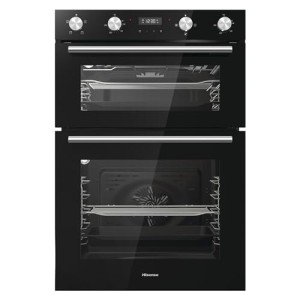The Inbuilt Cooker: A Comprehensive Guide to Modern Culinary Convenience
In the world of modern kitchens, functionality and style work together. The inbuilt cooker is a vital device that shows this trend, bringing both ease of use and aesthetic attract cooking spaces. Unlike standard standalone cookers, inbuilt cookers are integrated straight into cabinetry, providing a smooth appearance that improves the total kitchen design. This article explores the various types, benefits, considerations, and maintenance tips for inbuilt cookers, together with answers to often asked questions.
Types of Inbuilt Cookers
Inbuilt cookers can be found in various designs and setups to match various cooking requirements and kitchen designs. The following table summarizes the main types of inbuilt cookers readily available in the market:
| Type | Description | Pros | Cons |
|---|---|---|---|
| Built-in Ovens | Integrated ovens set up into kitchen cabinetry | Space-saving, streamlined design, numerous sizes | Setup complexity, expense |
| Induction Hobs | Cooktops that use electromagnetic energy to prepare | Quick heating, simple to tidy | Requires suitable pots and pans |
| Gas Hobs | Cooktops using gas for heat | Accurate temperature level control | Requires gas line setup |
| Mix Ovens | Ovens that integrate traditional and microwave functions | Versatile cooking choices | Might be more costly |
| Steam Ovens | Use steam convection to prepare food | Keeps moisture and flavor | Restricted cooking capacity |
Advantages of Inbuilt Cookers
Inbuilt cookers use a myriad of benefits that make them popular choices for contemporary kitchen areas. These consist of:
- Space Efficiency: Inbuilt cookers are designed to fit snugly into kitchen cabinetry, making efficient use of kitchen space and enabling for a more streamlined look.
- Enhanced Aesthetics: Their smooth integration adds to a sleek and contemporary kitchen style, removing clutter from countertops.
- Enhanced Functionality: Many inbuilt cookers come with innovative features like wise technology, which allows users to control cooking settings through smart device apps.
- Range of Options: Consumers can select from a series of designs and fuel types, consisting of electric, gas, and even solar choices, offering flexibility to fulfill individual cooking choices.
- Increased Safety: Built-in systems frequently include safety functions such as auto shut-off, making them much safer than traditional cookers.
Considerations When Choosing an Inbuilt Cooker
While the benefits of inbuilt cookers are clear, prospective buyers ought to think about numerous aspects before buying:
- Space and Measurements: Ensure your kitchen has sufficient space for the inbuilt cooker and think about the dimensions of the system relative to your kitchen cabinetry.
- Fuel Type: Decide in between electric, gas, or other combustion types based upon your cooking needs and kitchen setup.
- Cooking Preferences: Assess the kinds of meals you frequently prepare and choose a cooker that offers the features and functions you need.
- Budget plan: Inbuilt cookers can differ significantly in rate. It's vital to set a budget plan that thinks about both the purchase rate and prospective installation expenses.
- Setup Requirements: Some inbuilt cookers might require expert setup, especially gas models. Be sure to factor this into your overall task costs.
Maintenance Tips
To ensure the longevity and performance of an inbuilt cooker, routine upkeep is important. Here are some crucial suggestions:
- Regular Cleaning: Clean the surfaces and interiors according to the producer's guidelines. Avoid abrasive cleaners that could scratch or harm finishes.
- Examine Seals and Gaskets: Periodically inspect door seals and gaskets for wear and tear, as this affects cooking performance and energy intake.
- Adjust Temperature Settings: Test the temperature level settings occasionally to guarantee accurate cooking efficiency.
- Expert Servicing: Schedule routine expert evaluations, particularly for gas designs to guarantee security and correct performance.
Frequently Asked Questions
1. Are inbuilt cookers more expensive than standalone designs?
Inbuilt cookers can be more costly due to their innovative functions and built-in design, but they also provide improved aesthetics and functionality, which might validate the financial investment.
2. Can I install an inbuilt cooker myself?
While some designs have easy to use plug-in choices, professional setup is normally recommended, specifically for built-in gas cookers that need appropriate ventilation and safety checks.
3. What are the advantages of induction hobs compared to gas hobs?
Induction hobs warm up much faster, are generally safer considering that they do not produce an open flame, and are much easier to clean up due to the flat surface area. However, they need suitable cookware and might have higher upfront costs.
4. How can I enhance the efficiency of my inbuilt cooker?
Use the suitable cooking settings for various types of food, keep the interior and outside tidy, and guarantee proper sealing and insulation to enhance performance and reduce energy usage.
5. What features should I search for in an inbuilt oven?
Think about functions such as self-cleaning functions, programmable settings, temperature level probes, and wise innovation abilities for enhanced convenience.
Inbuilt cookers represent a blend of performance and design that empowers home cooks to explore their culinary passions with ease and effectiveness. As Ovens And Hobs are available in different types to match diverse cooking styles and kitchen designs, comprehending their benefits and factors to consider enables consumers to make educated options about this important kitchen device. With correct installation and upkeep, an inbuilt cooker can end up being an important possession in any contemporary kitchen, making preparing a pleasurable and trouble-free experience.

